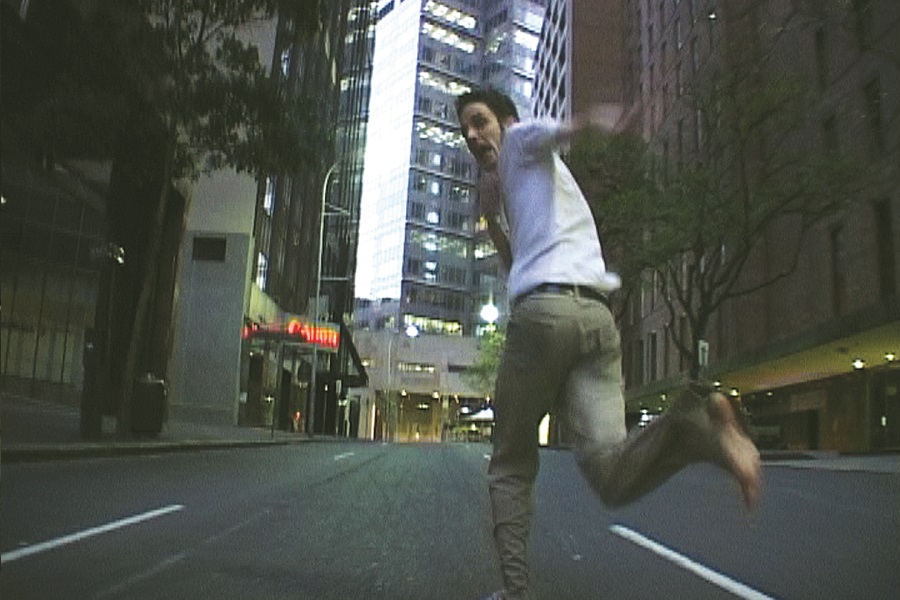TV Moore's videos relate as much to video clips or short, emotional movie trailers as to canonical performance practice.
TV Moore (ACT)
Born 1974, Canberra, ACT
TV Moore's videos relate as much to video clips or short, emotional movie trailers as to canonical performance practice. They are large scale, multi–channeled videos for purpose–built installation settings, working the repetition of single narrative moments or tropes and employing musical soundtrack.
Moore's Dead Zone videos, which the viewer sees, one on his or her left, the other on the right, show a figure running, staggering through a city. Empty streets presumably shot in the early morning. The figure is barefooted and stumbles repeatedly, always nearly loosing balance, and turns regularly to look over his shoulder at his (implied) pursuer. One video follows his progress, effectively constituting the pursuing point of view. The other would have been filmed retreating before the staggering runner: but is projected in reverse, so that the figure retreats and the oddness of his gait gains a vulnerable, awkward grace and the viewer gains a great intimacy with it, noting characteristic strengths and flexibility, the slightness of the figure and the dance–like quality of the movements.
Moore's Neddy Series (which deals with aspects of the Ned Kelly myth) allows the viewer greater distance: but they are extraordinarily affecting distillations of aspects of the story and its resonance: bravura, foolhardiness, iconicity, idealized recklessness in the case of The Wild Colonial Boy and, in Burn Out, beautiful elegy. Both are shot such that one half of the screen is mirrored on the other half–like a Rorschach blot: so half a standing, prancing Kelly figure doubles into one fully, but oddly moving, two–legged figure at centre screen. A small horse and rider (rider on hobby horse) rides out in the background balanced exactly by its mirror–imaged counterpart moving in the other direction. Kelly appears to be doing karaoke (or hairbrush singing, using a torch for a mike): which seems an equivalent for our identification with the lawless hero and Ned's possible sense of audience. Regularly we are reminded that the set is a pistol–shooting gallery: bullet–holed sheets move on wires through the space Ned occupies, a cheerless concrete bunker, severely perspectival.
Burn-Out really does consist of watching the campfire (two, because they're mirrored, duplicated) burn down. The symmetries (of fires, curling smoke and arched trees) are very beautiful. Kelly is evoked through the briefest appearance of the two horsemen cantering/cavorting just once between the trees: either members of his gang or the searching police party. They suggest innocence and futility, even the innocence and futility of the police: Australia as site of infinite, farcical repetition.
Ken Bolton from his Samstag catalogue essay, New Brew: Export Quality Six–Pack
2004 Anne & Gordon Samstag International Visual Arts Scholarship
2004 MFA, California Institute of the Arts, Los Angeles, USA
1999 Bachelor of Visual Arts, Sydney College of the Arts, University of Sydney

